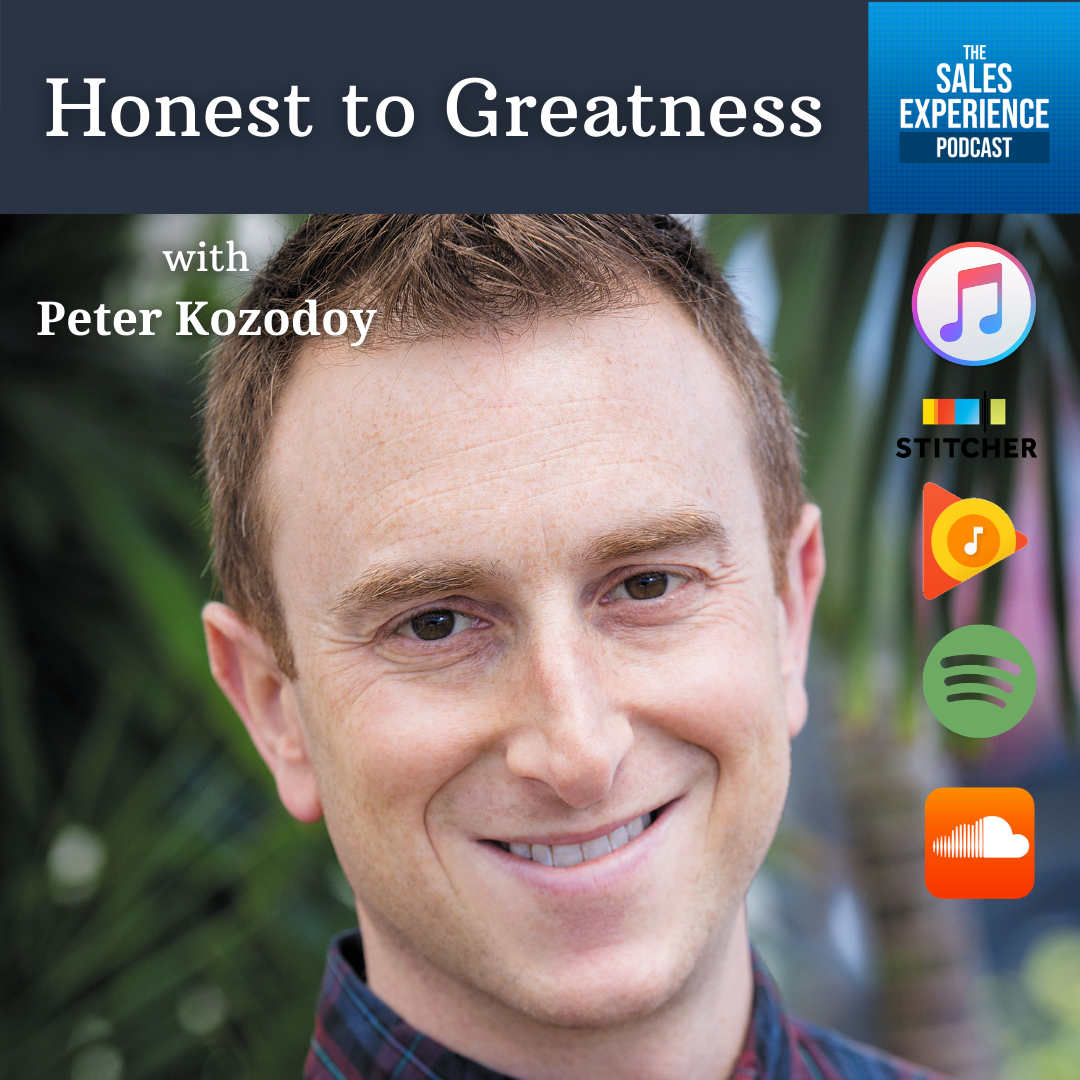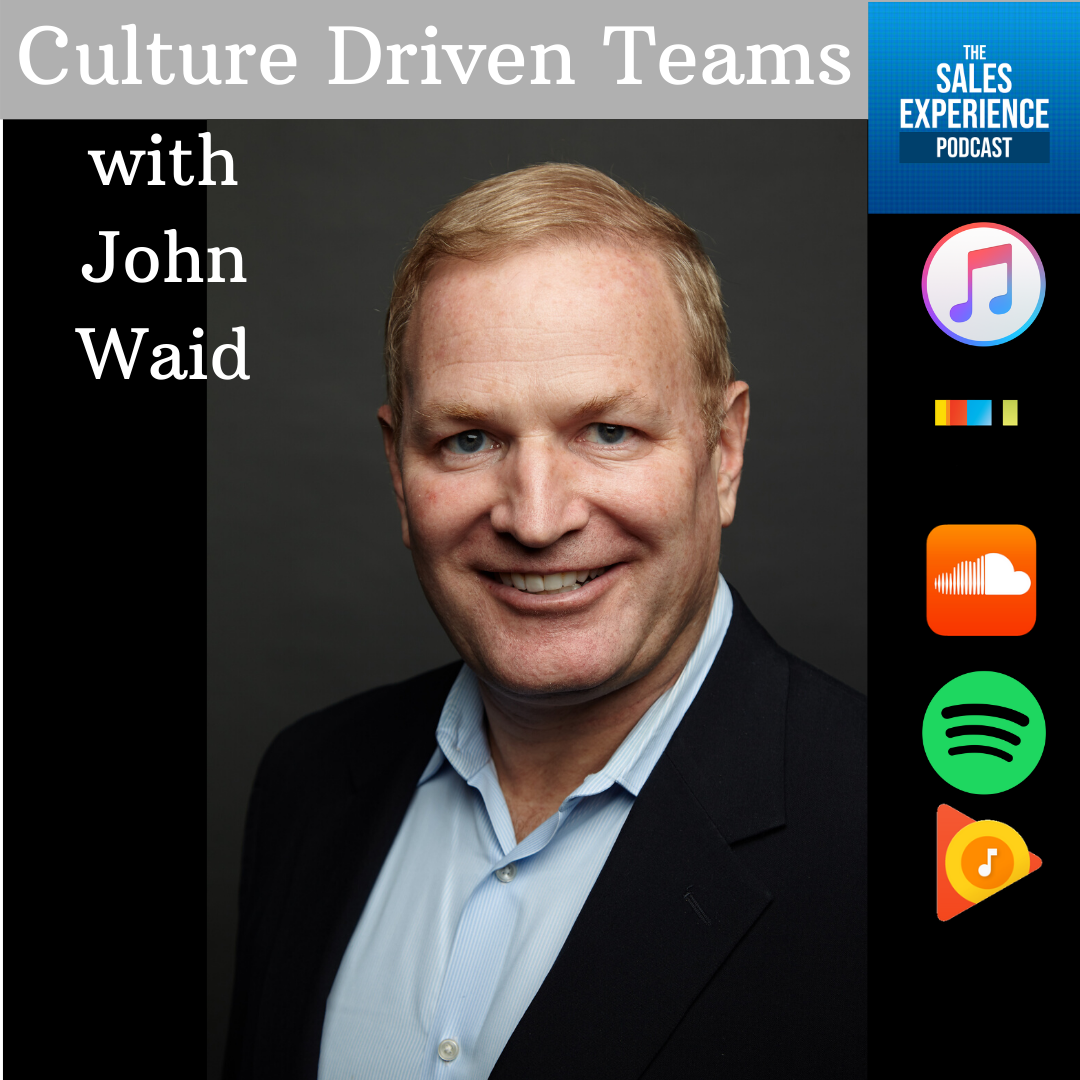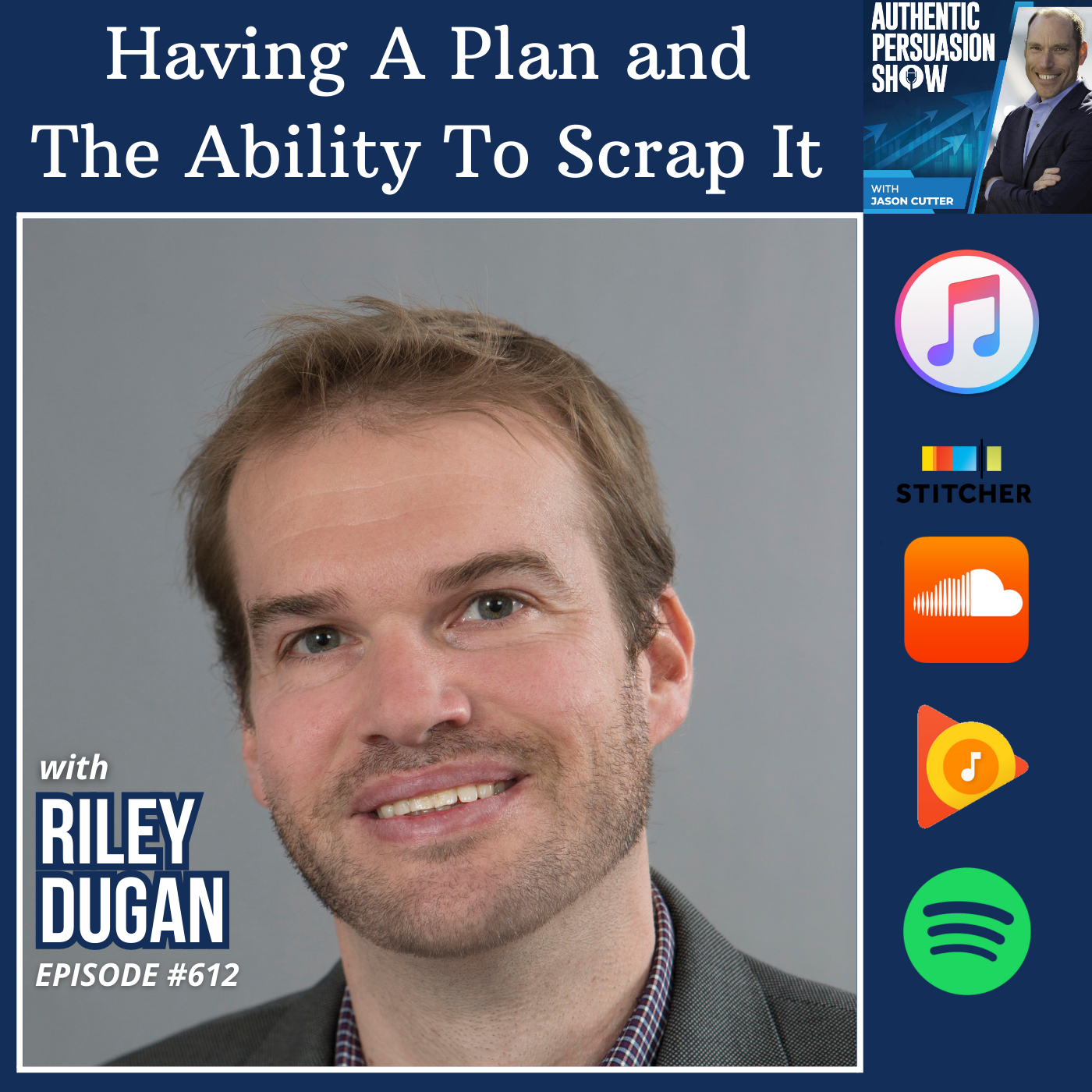Episode Transcript
Jason: Welcome back to the second part of my conversation with the amazing Paul Smith. He is a fantastic storyteller and has focused on writing books, doing training, doing coaching and helping people tell better stories. And I know for myself being in sales, it's super important to use stories. And the framework that he provides in our conversation is new to me because I tell stories.
I don't think I'm the greatest at it. And it's something I've wanted to improve on. And what he talks about in this conversation is so useful and helpful that I am excited to share it with everybody. So make sure to check out this episode. If you hadn't make sure to listen to part one, which was in yesterday's episode, but here you go conversation with Paul.
Paul: But there are eight questions that each story. needs to answer. All right. And essentially answer those questions just in bullet point form. And so those questions are things like, let's do it. Let's go through all of them. Oh yeah. Let's go through all okay. Yeah. So question number one is why should I bother listening to the story?
You're the audience, the person you're talking to, you need to answer that question for them in the first 10 or 15 seconds. You've got to give them a reason to want to listen to the next two minutes of you telling the story, right? Otherwise they might not, they might just space out or throw you out of their office or hang up with whatever.
So once you've adequately answered that first question. You've earned the right to answer the next five questions. All right. So here, those are where and when did it take place? Who's the main character and what did they want? What's the problem or opportunity they ran into? What did they do about it?
And how did it turn out in the end? That should sound like the natural flow of a story because it is the natural flow of a story. But if you're doing the math, there's two more, right? Number seven and eight. So seven is what did you learn from the story? And eight is what should I go do now? That's your opportunity to make a recommendation.
You should buy my product or you should agree to have a sales call with me, or you should agree to do whatever the next step of your process. Yeah. So those are the eight questions each. Sales story should answer not your whole sales pitch, but each individual two or three minutes story that you tell should answer those eight questions each time because they're all different.
Each story is different. So when you're trying to remember your stories, just remember the answer to those eight questions. Oh, it was five years ago at Oracle out in California. And the main character was this woman named Joanne. And the problem was this. And in fact, I tell people, write them down in your notebook or whatever.
Just write down the eight questions and the bullet point answers to the eight questions. And then remember that, because then every time you tell the story, it will sound like the first time you've ever told the story. Because it will be the first time you've ever told the story exactly that way, because you had to invent the sentences.
Each time you tell the story, because you've never scripted out every sentence you're going to say. You've just remembered the gist of the story, essentially, is what the eight questions are. It's remembering the gist of the story, and then you tell it, and it'll be fresh every time. That's a better way to remember your stories without them ever sounding as stale and rote memorized.
Jason: And there's multiple things I want to cover and I'm glad that you clarified that which I knew that's what you meant But I just wanted to make sure the difference between planning your stories and writing your stories and like scripting them word for word Because I know that's one of the lessons I learned When I started Toastmasters a long time ago to help with sales and presentations was in the beginning my analytical brain wrote word for word every speech.
And then I memorized it. And I am not the greatest at memorizing. Some people can memorize word for word, like scripts, quotes, anything. That's not my brain's strong suit. And so I would agonize and I would stress and I would walk into that meeting to give my presentation and just feel like I'm going to die because of the pressure, the stress inside.
And then what happens? I get up on stage. And I miss a sentence or a word, and I'm just thinking so much that I'm not in the moment, and I'm not doing a great job, and it's not coming across very well. And I forget something. Then I realized nobody knows what I forgot. You're the only one that knows what you forgot.
I'm the only one. Unless they're watching a teleprompter, and they see that I forgot something they don't know. Did I get my point across? And that was a huge shift for me mentally. Then I got to the point where I bullet point, outlined, filled in the gaps of, My speeches and then it was amazing and authentic and I just flowed and if I missed something, then nobody really knows.
But did I get my point across? And I do the same thing with sales. And so I'm glad that you mentioned that. And I love that framework of the eight questions because that's so valuable and anyone listening for your sales process, either for yourself or if you're building one for your team, then give that framework and just have that as a template and fill those things in for the stories.
Then you're filling in the gaps because yeah, I've sat through some presentations, some speeches, even comedy shows and things like that, where you can tell they do the same bit over and over again. And they're too much in their mind thinking about all the parts and it's not, it doesn't have the same energy.
It doesn't feel right.
Paul: Yeah. So exactly the way you just described you do with your speeches is exactly the way you should do it with your story. It's just the bullet point outline.
Jason: And what's interesting is the counterpoint to this, because in sales. A lot of it is writing scripts, creating scripts, getting people to do the same thing and be scripted over and over again.
And then the objection to that by salespeople is, I don't want to be scripted. I sound like a robot. I
want it to be natural and flow. But what I've found, and I tell people, and let me know your thoughts on this, is I remind them. It's if you've ever seen a movie, a TV show, a Broadway play, it's all scripted.
Rehearsed word for word the same every single time, right? If you go to a Broadway play, it's the same every single time. They don't do anything different yet. It feels like it's the very first time because it just has that feeling because they're just doing it in a different way.
Paul: Because two things, one, they're professional actors and their professional screenwriters have written the script.
So that it sounds conversational. It's difficult to write a script that sounds like it's not a script. There is a, people do that professionally, okay? And if you've never done it before, you're not very good at it. People tend to write scripts for speeches the way they write memos. And that's why they sound awful, right?
They sound like, you're, you sound like you're reading a corporate memo. But Hollywood screenwriters don't do that. They don't write it like it was a corporate memo. They write it like it was a conversation and these are professional writers. So unless you happen to be a really good conversational writer, like a novelist, okay, don't even try to write a script like it was a conversation because you won't be able to do it.
Just write down the bullet points and your brain will create the conversation automatically every time. Fill in the gaps.
Jason: Yeah. I think that's why I'm really bad at writing memos because I write like I speak, like I
think. So I'm really good at writing scripts and sales conversations and the back and forth.
I am not good at corporate bureaucratic memos. Interesting. That is not
Paul: my, I never met anybody who's good at the other one, but not, yeah. So that's backwards from what I usually run into. Good for you.
Jason: That's probably more useful. It's tough for me to make memos that don't sound like I'm just talking to myself blabbing.
So don't write memos. I don't stay away from that. I just rather tell stories. Hey, it's Jason here. We'll be right back to the podcast, but first, are you ready to change the way you view your selling role and become a sales professional? Do you have a team that is hungry for new ways to improve and grow?
If so, I have various coaching and consulting programs available that might be great tools to help you achieve your goals. To learn more about the ways we can work together and to book your free sales power call, go to jasoncutter. com. Now let's get back to the episode. Speaking of which, let's talk about the book that I mentioned, but you referenced, which is the most applicable one to sales.
Sell with a Story. What are some of the lessons? I'm just thinking of like, how can we help sales people use better stories? With the goal of persuasion with getting people to take the right action, what kind of advice or stories can make bigger impact?
Paul: What can you do to help them? Yeah. So the first thing you need to do with sales and storytelling is figure out what stories you need, right?
So that's always the first step. And how do you craft them and deliver them comes later. Cause if you're not telling the right story, it doesn't matter how well you tell it. It's not going to work. It was the wrong story. So first of all, figure out what stories you need. So that's what the first. I guess third of the book is about and the first part of the training classes I teach is I'm going through a bunch of the different typical types of stories that most salespeople need.
So there are 25 different types of sales stories that I've uncovered in doing the research for the book. And those range all the way from the moment you meet the prospect to building rapport, to the actual sales pitch itself, to resolving objections, to closing the sale, even a service after the sale, right?
All along a typical sales process, there are a handful of stories you might tell in each phase of that sales process over the course of three months or six months or a year, whatever, however long your sales process is in the 15 different contact points you'll have, whether it's email or in person or phone calls or zoom calls like we're having.
Yeah. You're going to have multiple touch points with that buyer before they actually sign on the dotted line. And each of those is an opportunity to tell one or two different. Two minute stories over the course of that conversation. So in general, I would take people through here, the 25 types of stories you might find useful, and then you need to figure out which of those are important to you personally and in your industry and for your company.
Cause it won't be all 25, right? You might need 13 and somebody else might need eight and somebody else might need 17 or 20 or whatever. So step one is figure out what stories would be useful to you. I'll be happy to send this to you later and you can put it in your show notes or something, but just what that list of 25 is, but I'll give you a little feel for it right now.
Those early stories are explaining who you are and what you do in some simple storytelling way for the prospect, just so they know, does this person do anything that could help me? Do I even need to bother? Having a relationship after this chance meeting that we've had, right? Or so that's early on, then you'll have more rapport building stories about you personally and why you do what you do and maybe your company's founding story, how your company's different from your competitors.
That's a really important story to tell, right? As you're moving into kind of the sales pitch phase of the process, a problem story is a story about the quintessential problem that your product or service solves, which is especially important, by the way. If your prospect doesn't even know they have the problem, right?
You want to tell a story to let the, Oh yeah, that happens here all the time. I guess I didn't realize that was a problem. Oh, and you can fix that. Good. Okay. We should be doing business, right? And then your typical customer success stories would fit in about that point in the sales process. But then there's some stories to help handle objections.
It has helped you negotiate price stories. You can use to create a sense of urgency. So they'll buy now instead of wait six months later. That's the typical objection you get from a buyer when they say, you know what? I need what you're selling. I like it. I can afford it, but now's not a good time. Come back in six months.
You hate that as a salesperson, right? I did my job perfectly and you're still telling me to go away and come back. It's a story to tell at that moment to create a sense of urgency to know I should buy now and not wait. And then other stories that you would tell after. You've actually made the sale, which are loyalty building stories, right?
The stories to help them say, Oh, I want to keep buying from this person over and over again. Or I want to maintain this relationship. I want to use more of their products and services because it's easier to maintain a customer than it is to keep getting new ones, right? So 25 types of stories in all, and you would want to pick which ones are most important to you before you move on to finding them.
And then crafting them. Those will be the next two steps.
Jason: Okay. So we'll definitely include that list in the show notes for anyone who wants to check that out. Obviously, when I hear that, I think 25 stories, that seems overwhelming, but like you said, pick out the ones that make sense, put that into your process, obviously use it evolve over time, add some, remove some relative to how it works.
I've heard different things over the years. What do you think the right ratio would be to time spent or number of stories, right? So time spent telling a story versus sales process, given the fact that every sales process is different, every product or service is going to be different, have a different need, but in all your research and conversations, was there any trends or any advice you give as a starting point?
Paul: Yeah, I think it's about 10 to 15%. Of the words coming out of your mouth should be in the form of a story. So if you do the math, say on a one hour phone call, whatever meeting. So out of 60 minutes, six to nine minutes of that ought to be spent telling stories. Most of it ought to be spent just having a conversation like you are and I are now are going through your sales pitch.
But 10 to 15%, and that means, by the way, these stories are two to three minutes long each. So that basically means two or three three minute stories over the course of an hour. And that's all you need.
Jason: Which is not much when you put it that way.
Paul: Yeah, it's not much. But imagine if all you did was tell stories.
That would just be weird, right? But a month or six months later, out of that one hour, conversation that 10 to 15%. Those two or three stories will absolutely be the thing that they remember the most, right? They'll forget most of the rest of what happened during that hour, but those two or three stories, that's what they're going to remember.
So you want to pick great stories and use them, but that's about the ratio. It's the minority of the time that you spend talking will be storytelling, but those would be the most impactful. memorable things that you say.
Jason: All right. That's it for part two. Make sure to subscribe so that you can catch all of these episodes.
Go to cutter consulting group. com slash podcast, where you can find the show notes, all of Paul's links, but as always keep in mind that everything in life is sales and people remember the experience you gave them.
![[E233] Sell With A Story, with Paul Smith (Part 2)](https://episodes.castos.com/salesexperiencepodcast/images/TSEP-Paul-Smith-Cover.png)


